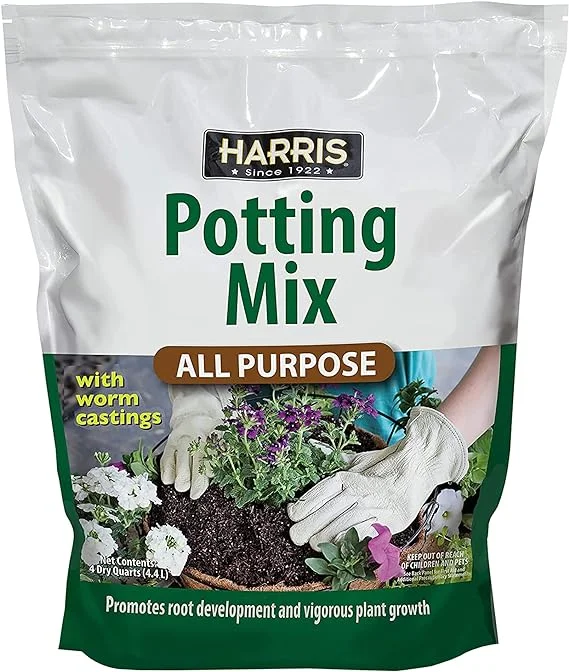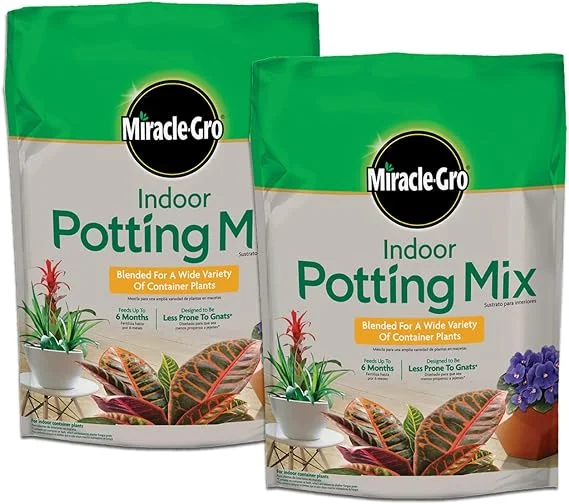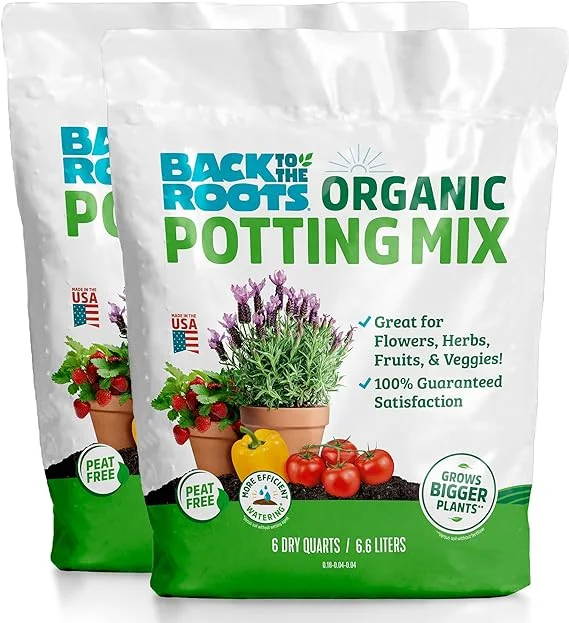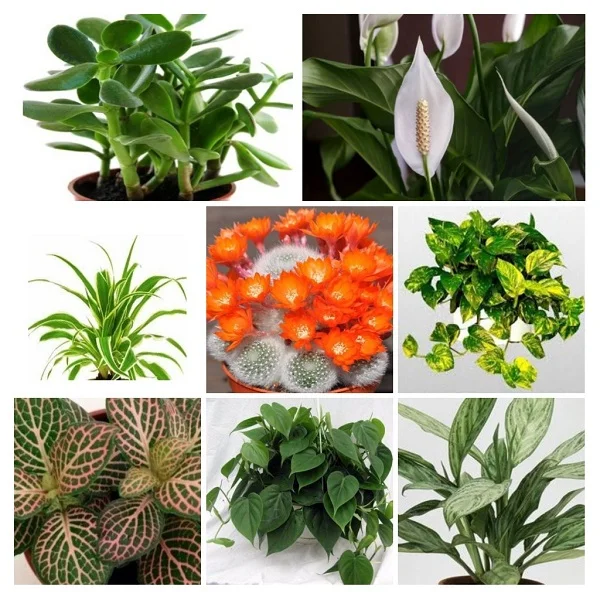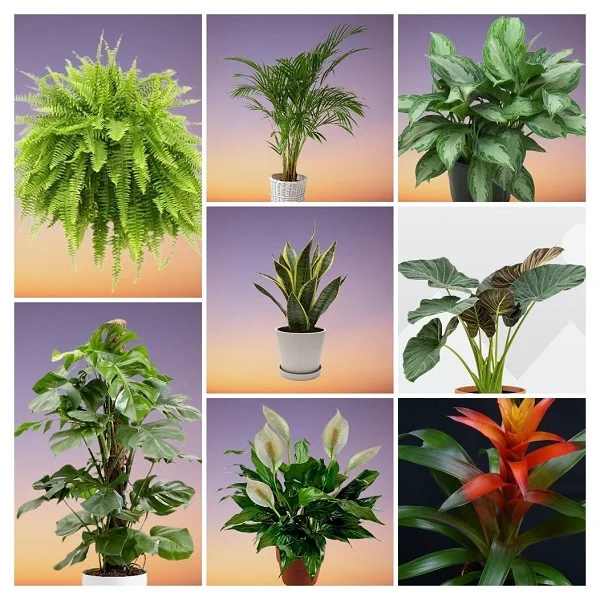Rabbit's Foot Fern (Davallia fejeensis) Care Indoors, Propagation, Problems & Remedies
Some links in this post may be affiliate links
Davallia fejeensis (Rabbit's Foot Fern) flourishes in bright indirect light, average warmth and humidity and consistently moist, rich, well-drained, all purpose soil coupled with fortnightly feeding in the growing season.
This resilient, low-maintenance fern is an excellent choice for beginners and seasoned plant lovers alike. In this guide, we will cover everything you need to know about growing and caring for your Rabbit’s Foot Fern indoors, plus how to propagate it like a pro.
Rabbit's Foot Fern is among the popular fern plants grown for its furry, brown and yellow rhizomes which look like a rabbit's foot and hence the common name, 'Rabbit's Foot Fern'.
The rhizomes absorb moisture and nutients and grow over the edge of the pot making it ideal for a hanging basket. The fronds are finely divided, light to dark green in color and look like carrot tops. These characteristics place the fern among the best plants for an office space where it will create a great first impression.
On account of its love for warm and humid conditions, Davallia fejeensis is one of the best plants for the bathroom as the atmosphere remains warm and moist.
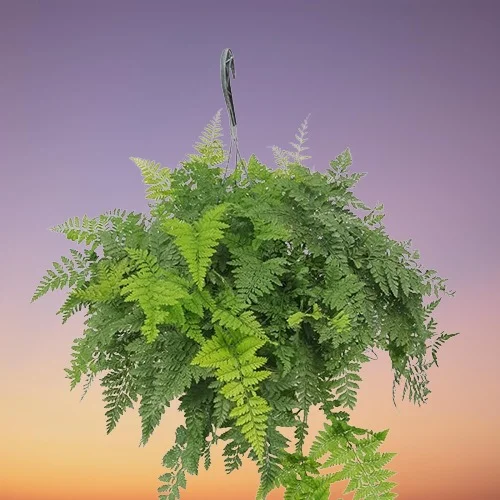
Botanical name: Davallia fejeensis
Family: Davalliaceae
Common name: Rabbit's Foot Fern
Origin
Davallia fejeensis are native to the Fiji Islands in Oceania where they are found growing on trees or in between rocks.
Size
Rabbit's Foot Fern grows to a height of about 2 feet and about 2 feet wide. It is among the best plants for hanging baskets where the rhizomes can hang freely for maximum display.
Related Species
Davallia fejeensis is related to Davallia canariensis (Hare's Foot Fern), Davallia bullata (Squirrel's Foot Fern) and Davallia trichomanoides (Black Rabbit's Foot Fern).
Is Davallia fejeensis pet-friendly?
Yes. Davallia fejeensis is non-toxic to humans and pets as stated by ASPCA. Rabbit's Foot Fern are not toxic to cats and dogs. They are safe to grow in the home.
Where to Buy
Are you looking to add Rabbit's Foot Fern to your plant collection? You may obtain these plant online from Etsy (Link to Etsy) or from Amazon (Link to Amazon).
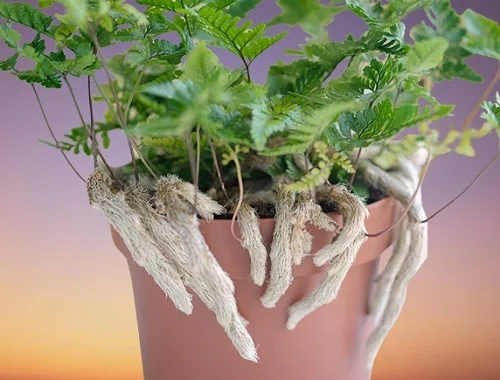
Davallia fejeensis Care Indoor
Davallia fejeensis thrives in bright indirect light (filtered light), average warmth of 15-240C, humidity of 60-70% and consistently moist, fertile, well-drained, multi-purpose soil coupled with fortnightly feeding during the growing season.
Rabbit's Foot Fern care also requires timely repotting as overcrowding can result in wilting and eventual death of the fern. Pruning is necessary to keep it neat as well as reduce pests and diseases. Keep reading for more on these growing conditions and how to achieve them.
Light Requirements
Rabbit's Foot Fern grows best in bright indirect light (dappled light). Keep it away from direct sunlight as it may scorch the fronds.
Too little light may lead to a pale or leggy plant. Therefore, move the fern to a brighter spot or use grow lights where natural light is not adequate.
Regularly rotate the pot to ensure that the fern receives light on all sides for even growth and prevent unbalanced growth.
Watering
Water your Davallia fejeensis liberally during the growing season and allow the top 1-2 inches of soil to dry out between waterings. Keep the soil consistently moist but not soggy to prevent yellowing and rotting.
Decrease watering in cold season as growth is minimal at this time to keep the soil slightly moist. Do not let the soil dry out completely to avoid excessive leaf drop.
Maintain the rhizomes moist by daily misting. Ascertain that the pot has a drainage hole to prevent the soil from getting soggy as it can lead to rotting and death of the plant.
Temperature and Humidity
Average warmth of 15-240C is ideal for Rabbit's Foot Fern. Protect it from drafts to prevent sudden changes in temperature as it can lead to reduced growth, leaf drop and brown leaf tips and edges.
Davallia fejeensis thrives in above average humidity of 60-70%. It is ideal for humid areas like a well-lit bathroom kitchen, laundry area and other moist areas. Too low humidity may result in stunted growth, yellowing fronds and brown leaf tips.
Elevate humidity by more frequent misting of the rhizomes to keep them moist or set the pot on a wet pebble tray. You may also grow the fern in a closed terrarium as a high humidity can be maintained inside a terrarium.
Fertilizer
Feed Rabbit's Foot Fern with a liquid, water-soluble fertilizer every 2-3 weeks during the growing period to promote a lush growth. Withhold feeding in the cold season as growth is reduced at this time, thus, the plant does not need it.
Regularly flush out accumulated chemicals and salts from the soil by running a stream of water through the soil until it comes out through the drainage hole. Repeat the process several times to make sure that most of the salts are leached out. Excessive salts in the soil can result in brown and yellow leaves.
Potting Soil
Davallia fejeensis soil should be a light, airy mix and rich in organic matter to prevent it from getting soggy while providing the required nutrients. All purpose potting mixes are ideal for this plant.
Repotting
Repot Davallia fejeensis every 2-3 years at the beginning of the growing season. Use a pot that is 1 size larger than the current one. Ensure that the pot has drainage a hole to prevent the soil from getting soggy as it can lead to rotting.
The large fern can also be divided into several sections during repotting and these sections can be potted individually to propagate new ferns. Take care not bury the rhizomes under the soil as it can lead to rotting. Check out these ceramic pots with a saucer on Amazon.
Pruning
Remove dead and damaged fronds from Rabbit's Foot Fern. As the fern ages, the older fronds turn brown. Cut them off at the base to maintain the plant looking neat and discourage pest and disease infestations.
Davallia fejeensis Propagation
Rabbit's Foot Fern propagation can be done by dividing the rhizomes at the beginning of the growing season.
1. Rabbit's Foot Fern propagation by rhizome divison in soil
Requirements
- Hand gloves to protect your hands
- Clean, sharp pair of scissors or knife
- 6-10 inches pots
- Well-drained, potting medium
- Watering can and clean water
Davallia fejeensis propagation by rhizome divison in soil
- Water the Rabbit's Foot Fern thoroughly one day before to make it easier to divide and also hasten establishment as a well hydrated plant suffers less shock and takes a shorter time to take root.
- Slip the plant out of its pot, remove excess soil, disentangle the roots and cut away any dead roots.
- With a clean, sharp pair of scissors or knife, carefully divide the rhizome into several sections. Ensure that each section has adequate roots to hasten rooting.
- Select a 6 or 8 inches pot and ensure that the pot has a drainage hole to prevent the soil from getting soggy to avoid rotting.
- Fill the pot with well-drained, potting medium and make a hole in the center of the pot. Ensure that the hole is slightly wider than the root base of the section.
- Place the section in the previously made hole and lightly firm the soil around the base while taking care not to bury it too deep; maintain the section at the same soil level it was in the previous pot.
- Liberally wet the soil until water comes out through the drainage holes. Place the pots in a warm, well-lit place away from direct sunlight until new growth emerges on the sections.
- Maintain the soil moist until the new Davallia fejeensis ferns are well established. Repot the new ferns into a pot 1 size larger than the current one in well-drained soil after which you can begin routine care.
2. Rabbit's Foot Fern propagation by rhizome division in water
Requirements
- Hand gloves to protect your hands
- Clean, sharp pair of scissors or knife
- Jar of plain water or a propagation station
- Well-drained, potting Mix
- Watering can and clean water
- Small pots about 8-10 inches
Davallia fejeensis propagation by rhizome division in water
- Water the Davallia fejeensis thoroughly at least 1 day before to make it easier to divide and also hasten establishment as a well hydrated plant suffers less shock and takes a shorter time to take root.
- Slip the plant out of its pot, remove excess soil, thoroughly wash the roots with plenty of water, disentangle the roots and cut away any dead roots.
- With a clean, sharp pair of scissors or knife, carefully divide the rhizome into several sections. Ensure each section has adequate roots to encourage establishment.
- Place each division in a jar of plain water or in a propagation station while ensuring that the root base is well submerged but keep the foliage above the water surface.
- Place the set up in a warm, well-lit spot away from direct sunlight to avoid scorching. Change the water every 5-7 days to keep it fresh and prevent fungal growth.
- When a good amount of new roots have formed on the sections, transfer the sections in moist, quality, rooting soil into individual pots at least 1 inch wider than the base of the rooted sections.
- Position the set up in a warm, well-lit place away from direct sunlight to prevent scorching and death of the plant.
- Maintain the soil moist until the new plants are well established. Transfer the new Rabbit's Foot Ferns into a pot 1 size larger than the current one while ensuring that the soil is well-drained after you can begin routine care.
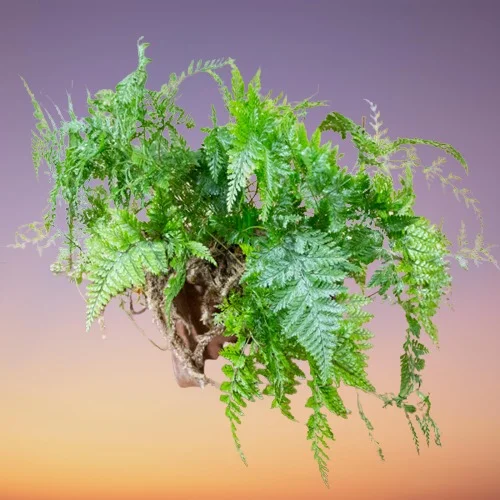
Rabbit's Foot Fern Problems & Solutions
Rabbit's Foot Fern problems include brown leaf tips, wilting leaves, yellowing, leaf drop, pests and diseases among others. Keep reading for more on these problems and how to fix them.
Brown shells scattered on fronds
Brown shells scattered on the fronds of Rabbit's Foot Fern is an indication of a scales infestation. Isolate the affected fern to avoid spread to other plants and treat it for the pests.
Pests
The other common pests in Rabbit's Foot Fern are mealy bugs. Isolate the affected fern to avoid spread to other houseplants and treat it with a horticultural oil as per the manufacturer's recommendations.
Yellowing fronds, brown leaf tips and no growth
Yellowing fronds, brown tips and no new growth in Rabbit's Foot Fern are due to dry air. To increase humidity mist the rhizomes more frequently to keep them moist, set the pot on a wet pebble tray or use a cool mist humidifier. You may also grow the fern in a closed terrarium.
Excessive leaf drop
Leaflets drop in Rabbit's Foot Fern is indicative of too dry soil. Maintain the soil consistently moist during the growing season and slightly moist in the cold season. Do not allow it to dry out completely for an extended period of time. Learn more on how to water houseplants the right way.
Yellowing leaves
Yellowing leaves in Rabbit's Foot Fern are caused by soggy soil. Ensure that the pot has a drainage hole and that the soil is loose and free-draining to prevent it from getting soggy.
Wilting leaves
Wilting leaves in Rabbit's Foot Fern is an indication of overcrowding in the current pot. Repot the fern into a larger pot or divide it up for more plants. Take care not to bury the rhizomes under the soil as it can lead to rotting.
Isolated brown and yellow leaves
Browning and yellowing leaves in isolated areas of Rabbit's Foot Fern are as a result of excessive salts originating from watering or fertilizers. Flush out the salts by repeatedly running a steady stream of water thorough the soil and avoid overfertilizing in the future.
Conclusion
Davallia fejeensis (Rabbit’s Foot Fern) is a charming, easy-care houseplant that adds texture and tropical vibes to any indoor space. With the right light, humidity, and watering, your fern will thrive for years even decades.
Frequently Asked Questions
1. Can I grow Rabbit’s Foot Fern in a hanging basket?
Yes. Rabbit’s Foot Fern looks stunning with its fuzzy rhizomes cascading over the edges.
2. How often should I repot my Rabbit’s Foot Fern?
Repot Rabbit’s Foot Fern every 2-3 years, or when the rhizomes outgrow the pot.
3. Why are my Rabbit’s Foot Fern’s fronds drooping?
Rabbit’s Foot Fern fronds are drooping due to low humidity, temperature stress, underwatering, or too much direct sunlight.
4. Can I grow Davallia fejeensis outdoors?
Yes. Davallia fejeensis can grow outdoors but only in warm, humid climates (zones 10-11). Otherwise, keep it indoors.
5. Why are my Davallia fejeensis rhizomes drying out?
This could be due to low humidity or underwatering. Increase humidity by misting or by use of a humidifier. Do not allow the soil to dry out completely; water when the top 1-2 inches of the soil dry.
You liked it? Share on social media.
Related Content
Amazon Associates Disclosure
Homeplantsguide.com is a participant in the Amazon Services LLC Associates Program, an affiliate advertising program designed to provide a means for sites to earn advertising fees by advertising and linking to amazon.com.
